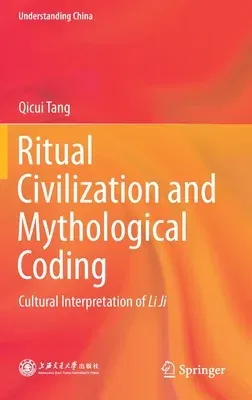Qicui Tang
(Author)Ritual Civilization and Mythological Coding: Cultural Interpretation of Li Ji (2020)Hardcover - 2020, 19 July 2020

Qty
1
Turbo
Ships in 2 - 3 days
In Stock
Free Delivery
Cash on Delivery
15 Days
Free Returns
Secure Checkout

Part of Series
Understanding China
Print Length
346 pages
Language
English
Publisher
Springer
Date Published
19 Jul 2020
ISBN-10
9811543925
ISBN-13
9789811543920
Description
Product Details
Author:
Book Edition:
2020
Book Format:
Hardcover
Country of Origin:
NL
Date Published:
19 July 2020
Dimensions:
23.39 x
15.6 x
2.39 cm
Genre:
Asian - Chinese
ISBN-10:
9811543925
ISBN-13:
9789811543920
Language:
English
Location:
Singapore
Pages:
346
Publisher:
Series:
Weight:
743.89 gm